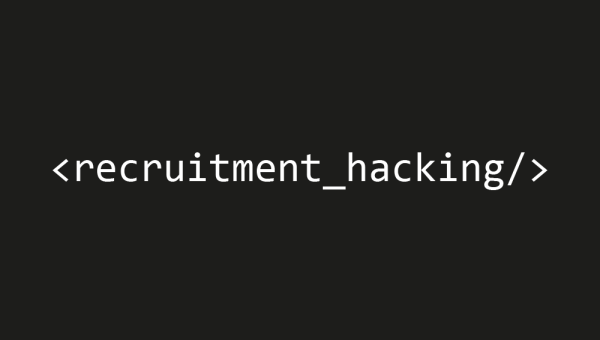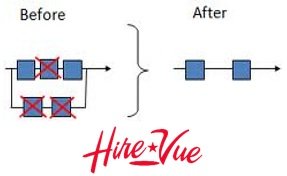5 Quick Ways to Hire Smarter Right Now


Most of us have heard the term “growth hacking” at some point. It’s a marketing technique that combines creative and analytical thinking to achieve rapid, low-cost growth. For candidate recruiting, I prefer the conservative approach of creative recruiting strategies. Sure, recruitment hacking sounds good, but it actually doesn’t mean anything. Similarly, “life hacking” describes ways in which we can solve common problems quickly and cheaply to make life easier (a personal favorite of mine: wrapping a wet paper towel around beer bottles to cool them faster). But as if that wasn’t enough: Turns out recruiters can adopt the same methods to make their lives easier.And have more time for wrapping wet towels around beer bottles. Coined by Peter Gold, recruitment hacking is a new concept that could differentiate savvy recruiters in today’s increasinglycandidate-led market. Basically, it lets you spend more time on the good things you like doing (hiring incredible talent), and less on the crappy things you don’t like(clearing your incredible inbox). I know what you’re thinking: “Sounds great and all,but do I really have time to learn a new skill set?” The good news is you don’t have to—here’sa list of things you can do right now to think like a growth hackerand get better candidates through your door in less time:
1. Reduce friction to get more talent.

[

Dairy-based metaphors aside, the importance of this is backed up by data—longer forms are shown to have lower conversion rates, so if your application form is unnecessarily longyou might be missing out on some valuable talent. Try cutting down to the bare minimum of informationyou need to proceed with a candidate (is name, job title, and contact details enough?). And if you really can’t reduce the number of form fields, split the form up over several pages to make it less visually intimidating for your candidates. *Hint* what works for others may not necessarily work for you. For example, these clever folks managed to increase conversion a gajillion percent*(*approximately)by adding more fields, so you’ll need to experiment with different hypothesesto get in your zone. Which leads me nicely on to the next point:
2. Test everything.
[
So how do you do it? Compare how different elements of your landing pages—layout, form length, copy, etc.—perform by running different variations of the same page at the same time, and comparing the results. Think that moving the application form to the top of the page might get you more applicants? Give it a go. Reckon a different job description would speak to your candidates better? Try it out. Take a peek at services such as Optimisely or Crazy Egg for quick and easy ways to start experimenting with A/B testingand measuring the results without having to graduate from Codeacademy first. This will help you to understand what’s resonating with your candidates (and what isn’t), and give you a chance to validate those gut feelings you have about your process using real data.

DamnitTom,I don’t have time to mess around with that! OK, here’s another idea: If you’re already running PPC and paid advertising on your open positions, you can use these platforms to conduct your own A/B testing. Invest a small amount of money into running different ads against each other, changing things like the copy you use in the title and description, or perhaps the image you use to promote it. Compare the effectiveness of these ads by looking at metrics such as clickthrough rates. In a short period of time, you’ll start toget a goodidea of what’s working, and you’ll be on the way to improving your ad spend and yield. Either way: Fail fast, fail quick, and move on. Testing your approach (and continuing to test and refine on an ongoing basis) will reap greater rewards down the road (more registrations andhappier candidates), and help you understand which messaging works best. Small, quick changes like adjusting your keywords can make a big difference. That’swhy it’s so important to:
3. Target your audience.

[

Measure how segmentation improves goals such as registration or metrics such as the amount of time your visitors spend on your pageto see the impact of your efforts. For some more guidance, Neil Patel of Quicksprout has made an incredible free resource for diving more into the world of landing page optimization, including some of the techniques discussed here. Of course, in order to target your messaging, you have to know what that messaging is in the first place.Which is why you need to:
4. Use social analytics tools to engage with your candidates.

[
Step #1
Use tools such as BuzzSumo or Topsy to search for popular conversations aroundyour recruiting areas and industries. Type in a subject to get a feel for the issues surrounding the topic, and click through the articles and contentto learn more. Free services such as Hashtagify can also be used to search for popular hashtags relating to specific topics. This will give you an idea of the kinds of people who are referenced or vocal on these subjects.Try makingTwitter lists of these industry folks to stay up-to-date, and get into the habit of checking out their content (see this Buffer post for more cool things you can do with Twitter lists). *Hint* Don’t be like that guy at a party who comes up to people in the middle of a conversation and goes “HEY GUYS WHAT ARE YOU TALKING ABOUT?” Use social analytics tools to educate yourself on a subjectbefore creepily inserting yourself into the discussion.

Once you have a deeper understanding of the landscape, you can move on to the next step:
Step #2
Like growth hacking, content marketing is another term that gets bandied about willy-nilly. But it’s effective: Companies using content marketing tacticscan see 6x conversion rates and 253% higher online engagement [source]. So how can you use it to improve your recruiting efforts? Now you have a better idea of what to talk about, you can start publishing your own content around that subject on platforms such as LinkedIn Publisher, or your personal or company blog. Medium is a great place to publish (and read) articles that look good without having to worry about things like blog templates or hosting. Building up a library of valuable content will help draw in like-minded people fromyour target audiences, and improve your credibility as a recruiter in your industry. And what does that lead to? Better quality candidates, and better referrals:
5. Offer better referral rewards and get better referrals.

[

There are countlessother techniques you can leverageto improve things like candidate scheduling, short-listing, and job posting. For some more inspiration, you can watch Peter’s webinar here via the good folks at Cornerstone OnDemand. And remember toAlways Be Testingto see what’s working, or else Alec Baldwin will deprive you of caffeine. Any recruitment hacking tactics you’ve experimented with (successful or otherwise) to improve your hiring? Let me know in the comments section—would love to discuss!
